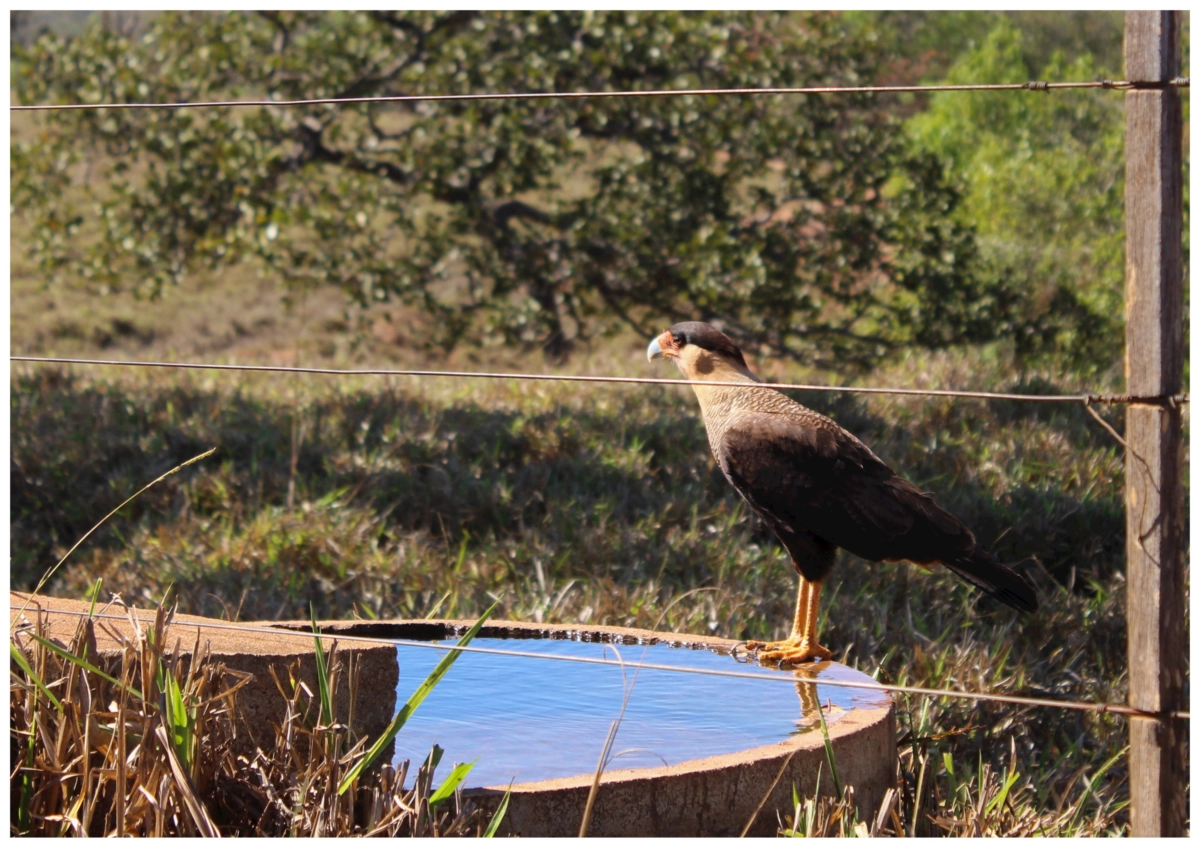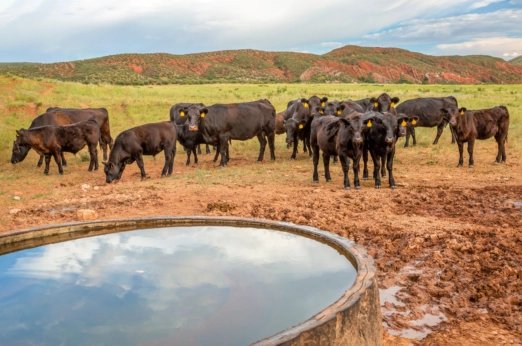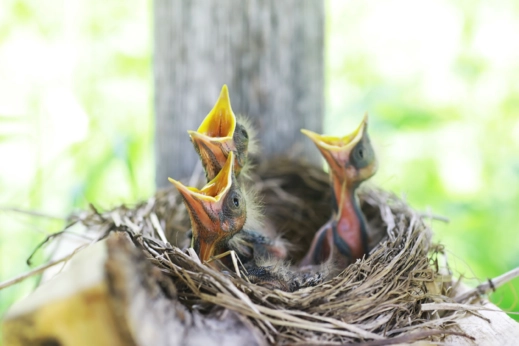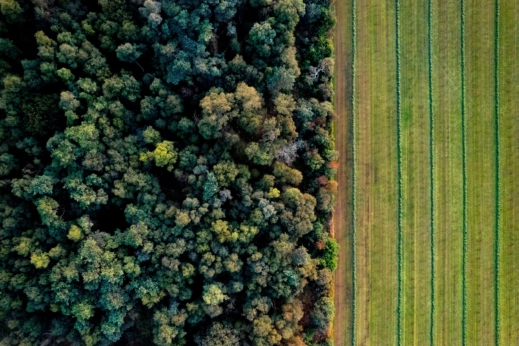Wild birds are dealing with unprecedented heat. Here’s what it means on the farm.

In June of 2021, an extreme heatwave hit the Pacific Northwest. From British Columbia to Oregon, juvenile birds in urban areas were leaping from their nests to escape the temperatures, falling to equal or greater danger on the ground. Wildlife rescues saw record intake numbers—and a large number of deaths.
The heat dome was not typical for the region, to be sure, but high temperatures are becoming ever more normalized due to climate change. Other parts of the country see birds dealing with heat stress more often. Earlier this year, the Arizona Republic reported notable incidences of bird stress in Tucson. In California’s Central Valley, drought can endanger migratory birds who look for water sources and find scarcity instead. These heat-related catastrophes are especially frightening in context: Over the last 50 years, the number of birds in the US and Canada has dropped by a startling 29 percent.
These occurrences in urban areas are scary, but heat stress can affect birds in more rural spaces, too, and farmland is no exception. Two recent studies looked at how birds interact with agricultural lands and how changes in water, heat or aridity can throw off the balance in this delicate equation.
Raptors and water tanks
Many ranchers are familiar with making sure their livestock have access to water sources—whether that be stock tanks, overflow areas or earthen tanks. But it turns out that birds, specifically raptors, depend on these water sources, too.
“Certainly the livestock use them, but the overflow areas, you have all kinds of small mammals come in and use them,” says Clint Boal, PhD, professor of wildlife biology at Texas Tech University. “And so they kind of function as de facto oases in this very arid landscape.”
Boal was interested in how raptors interacted with water sources, because it is a common assumption that raptors—birds of prey including hawks, falcons and barn owls—don’t need to drink water to survive because they can get their water from their prey. They may use these water sources to cool off, but they aren’t necessarily there to drink it. Using cameras that had been set up at these ranch water sources across west Texas for another study, Boal and his team began their work, which was later published in BioOne.

Livestock stand near a water tank. (Photo: Shutterstock)
They found that the raptors increased their visits to water sources when it was either exceptionally hot or exceptionally dry. (Sometimes, in the winter, the temperatures are lower but it’s still arid.)
Eggs and juveniles are particularly vulnerable, due to their dependency on their parents for temperature regulation.
“Even if we have water resources that adults can access, if heat continues [in] the direction it’s going, and aridity—probably even more importantly—continues [in] the direction it’s going, those nestlings cannot survive,” says Boal.
For every raptor you see, there are countless other species also benefitting from these water sources. A lot of migrating birds, such as songbirds, use them as well.
Aboveground tanks have a drowning risk—animals and birds sometimes have trouble getting out. But this risk can be mitigated by installing simple escape ramps. Shallow water sources low to the ground can be particularly beneficial for birds.
“From a wildlife perspective, having these earthen tanks, or seeps that they set up, or just overflow areas where enough water is overflowing out of the tank, to be accessible to wildlife … can be really beneficial to virtually every species out there,” says Boal.
Stress in the nest
Birds nesting near agricultural lands may be particularly vulnerable to the effects of heat, says Katherine Lauck, a doctoral candidate in ecology at UC Davis and the lead author of a paper published in Science that examined the effects of heat stress on birds. Lauck used 23 years of data from NestWatch, a bird camera program from Cornell University, to retrieve information about bird fledgling success from 58 species across the country. This abundance of data allowed them to trace trends across time and space.
One of Lauck’s biggest findings was that fledgling success was lower near agricultural lands. Fledgling success is how many birds make it to adulthood. While this study didn’t investigate why this is, Lauck hypothesizes that it has something to do with lesser canopy cover—the amount of shade the birds could access—in agricultural areas.
“We were really excited to be able to key in on reproductive success as a proxy for fitness,” says Lauck. “And the lower the fitness of a population of birds is, the more likely that population is going to decline and eventually go extinct.”
Reproductive success is closely tied to whether a population of birds is going to be able to persist in agriculture, more so than simply looking at the abundance of birds in agriculture, says Lauck.
Temperature stress can affect fledgling success in the egg and chick stages. Adult birds thermoregulate their eggs by keeping them warm, but it’s harder to keep them cool. Once a chick hatches, all of their water is obtained through food, because they cannot yet fly to a water source. If it’s too hot to survive without supplementary water, the chicks may not make it to adulthood.

Baby birds depend on their parents for sustenance and thermoregulation. (Photography: Shutterstock)
“A huge important factor for thermoregulation in birds is water availability,” says Lauck. This is significant for birds in agricultural areas that are also water-stressed, such as California and along the Colorado River.
Heat can decrease the fledgling success of birds, and Lauck’s next research project will look into how this happens.
“If we figure out what the mechanisms are, that leads us directly to concrete conservation interventions,” says Lauck.
At the farm level, Lauck recommends certain actions that can help birds deal with this heat stress. Maintain existing trees, even if they’re isolated. Allow for riparian buffers between fields—anything to foster shade. “We think that even small patches of forest are useful for providing these microclimate refuges for birds living in agricultural landscapes. It can allow birds to access a little bit of that extra water that seeps from your land,” says Lauck.
It should also be noted that climate change is the reason these warm conditions get warmer, and mitigation must be viewed from that perspective, too.

Trees adjacent to farmland can provide critical canopy to wild birds. (Photo: Shutterstock)
There are almost three billion fewer birds in the wild in the US and Canada now than there were in the 1970s. Besides this being tragic just for the sake of the birds, Lauck says this also impacts humans.
“We’re losing the value that those birds bring to our working landscapes,” says Lauck. “They inspire us, they drive this massive bird-watching industry, but they can also benefit farmers by eating pests and pollinating crops. And so I think people can see that there is value in birds. And they just need to know ‘what do I do?’”
Farmers have an important role to play, says Lauck. Across the globe, nearly half of all habitable land is used for farming. But this paper can provide some insight into how to co-manage agricultural land for bird species that are trying to live on despite climate change and habitat destruction.
“If we want to maintain a resilient, biodiverse biological community that will continue to provide us with ecosystem services … but also the sense of a connection to the natural world and the sense of belonging you feel when you see a familiar organism living around you,” says Lauck, “we need to manage agriculture for more than just production.”
***
Learn more about the benefits of birds on farms: We’ve written about this before. Check out this story about how birds help out agricultural lands.
Want to make your farm more bird-friendly? The National Audubon Society has some ideas. Check out its Conservation Ranching program for more information.
If you live in an urban area, then we’d recommend reading this piece in the Arizona Republic, which offers some guidance on what to do if you see a young bird that’s fled the nest due to heat.
Excelent